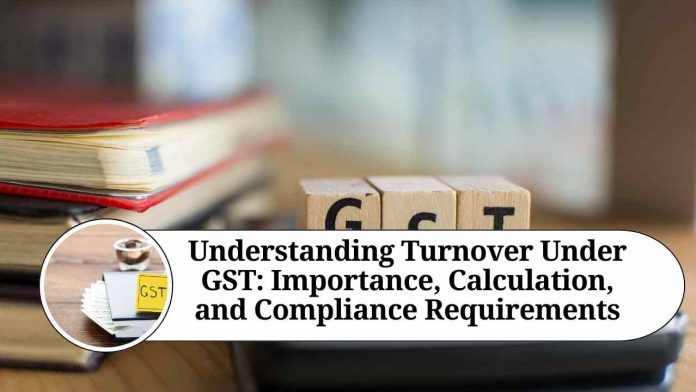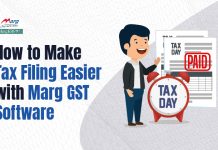INTRODUCTION
Turnover under GST refers to the total value of all taxable supplies (goods and services) made by a registered person in a financial year. It includes all supplies made within and outside the state, but excludes exempt supplies, inter-state supplies, and taxes levied under GST.
Every registered person under GST is required to file a GST return based on their turnover. The frequency of filing GST returns depends on the turnover of the business. Businesses with a turnover of up to Rs. 5 crore can file quarterly returns, while those with a turnover of more than Rs. 5 crore have to file monthly returns.
It is important for businesses to accurately calculate their turnover under GST as it determines their compliance requirements and the amount of tax liability. Incorrect calculation of turnover can lead to penalties and legal consequences.
In addition to determining the frequency of filing returns, turnover under GST also affects the eligibility for availing various benefits and schemes under the GST regime. For instance, businesses with an annual turnover of up to Rs. 1.5 crore can opt for the Composition Scheme, which allows them to pay a lower rate of tax and file simplified returns.
It is also important to note that turnover under GST is not the same as turnover under the Income Tax Act. Turnover under GST includes only taxable supplies, while turnover under the Income Tax Act includes all revenue generated by the business.
Apart from determining the frequency of filing returns and eligibility for various schemes, turnover under GST also plays a significant role in determining the tax liability of a registered person. Businesses with a higher turnover are subject to a higher rate of tax as per the GST rates prescribed by the government.
Furthermore, businesses with a turnover exceeding Rs. 2 crores are required to undergo a mandatory annual audit by a Chartered Accountant or a Cost Accountant. The audit report must be submitted along with the annual return filed by the business.
The turnover under GST is calculated based on the value of taxable supplies made by the business, including the value of goods and services supplied, advances received, and exports made. The value of supplies includes the taxes levied under GST, such as CGST, SGST, or IGST.
It is important to note that in case a business has multiple registrations under GST, the turnover of all registrations must be combined to determine the total turnover for the purpose of compliance.
Moreover, in case of a change in the constitution of the business or a merger or acquisition, the turnover of the previous entity must be taken into consideration while determining the turnover of the new entity.
Conclusion
Turnover under GST is a crucial aspect of compliance for businesses registered under GST. It plays a significant role in determining the tax liability of the business, eligibility for various schemes and benefits, and the frequency of filing returns. Accurate calculation of turnover is essential to avoid penalties and legal consequences.
Other Related Blogs: Section 144B Income Tax Act
Frequently Asked Questions (FAQs)
Q.What is turnover under GST?
Turnover under GST refers to the total value of all taxable supplies (goods and services) made by a registered person in a financial year. It includes all supplies made within and outside the state, but excludes exempt supplies, inter-state supplies, and taxes levied under GST.
Q.How is turnover under GST calculated?
Turnover under GST is calculated based on the value of taxable supplies made by the business, including the value of goods and services supplied, advances received, and exports made. The value of supplies includes the taxes levied under GST, such as CGST, SGST, or IGST.
Q.Why is turnover under GST important?
Turnover under GST is important as it determines the compliance requirements and tax liability of a registered person. It also affects the eligibility for availing various benefits and schemes under the GST regime.
Q.Is turnover under GST the same as turnover under the Income Tax Act?
No, turnover under GST is not the same as turnover under the Income Tax Act. Turnover under GST includes only taxable supplies, while turnover under the Income Tax Act includes all revenue generated by the business.
Q.What is the frequency of filing GST returns based on turnover?
Businesses with a turnover of up to Rs. 5 crore can file quarterly returns, while those with a turnover of more than Rs. 5 crore have to file monthly returns.
Q.Are businesses required to undergo an audit based on their turnover under GST?
Yes, businesses with a turnover exceeding Rs. 2 crores are required to undergo a mandatory annual audit by a Chartered Accountant or a Cost Accountant.
Q.Is it necessary to combine the turnover of all registrations under GST?
Yes, in case a business has multiple registrations under GST, the turnover of all registrations must be combined to determine the total turnover for the purpose of compliance.
Q.What happens if a business calculates their turnover incorrectly?
Incorrect calculation of turnover can lead to penalties and legal consequences. It is important for businesses to accurately calculate their turnover under GST.




















